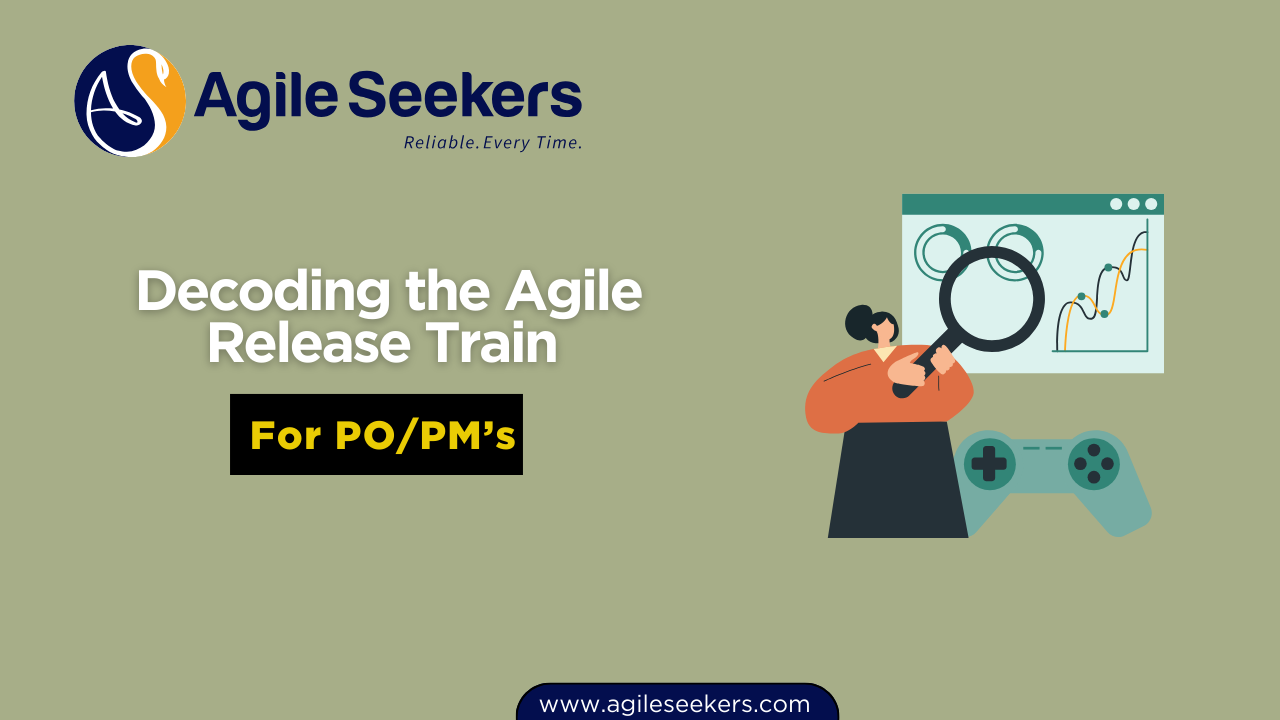Decoding the Agile Release Train (ART) for POPMs

If you're stepping into the world of SAFe® as a Product Owner or Product Manager (POPM), you've likely come across the term Agile Release Train (ART). It may sound technical or even intimidating, but here’s the good news: it’s not a train you need to catch, and it doesn’t run on tracks.
Let’s break it down simply—this blog post is your non-technical guide to understanding what the ART is, how it works, and most importantly, how POPMs interact with it to drive value across the enterprise.
What Is the Agile Release Train (ART)?
Think of the Agile Release Train as a virtual team of teams. It brings together multiple Agile teams (usually 5 to 12) that collaborate towards a common mission. These teams plan, commit, develop, and deliver value together in a synchronized cadence known as Program Increments (PIs).
The ART is not a physical entity, but a structure that aligns teams to a shared business and technical goal. It ensures that large, complex solutions can be developed collaboratively, efficiently, and with transparency.
Key Characteristics of the ART
- Fixed Schedule: ARTs operate on a regular schedule, typically delivering value every 8 to 12 weeks.
- Team Alignment: All teams on the ART align on planning, priorities, and delivery cadence.
- Shared Vision: The ART is guided by a common vision and roadmap.
- Transparency: Everyone involved knows what’s being built and why.
Roles on the ART: Where Does the POPM Fit?
Each team on the ART has specific roles, and one of the most critical is the SAFe® Product Owner/Product Manager. As a POPM, your role spans both strategic and tactical activities to ensure that the ART delivers the right solutions at the right time.
Here’s a snapshot of the key ART roles and their focus areas:
| Role | Primary Focus |
|---|---|
| Release Train Engineer (RTE) | Facilitates ART processes and execution |
| System Architect | Provides architectural guidance and enablers |
| Product Owner (PO) | Owns team-level backlog and defines user stories |
| Product Manager (PM) | Manages the ART’s program backlog and roadmap |
The POPM and the ART Lifecycle
As a POPM, you don’t just interact with the ART—you fuel it. From planning to execution, your involvement ensures the train stays on track and delivers customer value. Here's how:
1. Pre-PI Planning
You collaborate with stakeholders to gather feedback, prioritize features, and define the upcoming Program Increment’s objectives. This includes working closely with architects and business owners.
2. PI Planning
This is the heart of the ART. During PI Planning, you present features and stories, align priorities, and work with teams to define the work for the next increment. You help translate the vision into actionable work items.
3. Iteration Execution
Once the PI kicks off, you support Agile teams in delivering stories, clarifying requirements, and managing the backlog. You attend daily stand-ups and iteration reviews, ensuring continuous alignment.
4. System Demo and Inspect & Adapt
At the end of each iteration and PI, you help showcase what was built, gather feedback, and participate in improvement workshops. These events ensure the ART remains agile and adaptive.
Common ART Events You’ll Participate In
- PI Planning – Aligns all teams on scope and objectives.
- Scrum of Scrums – Offers cross-team visibility.
- System Demo – Showcases end-to-end value delivery.
- Inspect & Adapt – Focuses on learning and improving the ART process.
Why Understanding the ART Matters for POPMs
When you understand how the ART operates, you become more than a backlog manager—you become a value enabler. You connect strategy to execution, work across teams, and ensure the customer is at the center of everything delivered.
With the SAFe® POPM Certification, you not only learn the theory behind the ART but also gain practical tools to make an impact from Day One.
How to Become an Effective POPM in the ART
If you're looking to maximize your impact within the ART, here are some tips:
- Master backlog refinement: A well-maintained backlog keeps the ART humming smoothly.
- Collaborate continuously: You’re a bridge between teams and stakeholders—build strong relationships.
- Think customer-first: Every feature and story should deliver tangible value.
- Use data: Metrics like flow, velocity, and predictability can inform smarter decisions.
Getting Started with SAFe® POPM Training
The best way to build your ART know-how? Formal training. Through comprehensive SAFe POPM training, you’ll learn how to support Agile teams, manage backlogs, and maximize value delivery within the ART framework.
Whether you're looking to deepen your expertise or step into a new role, the SAFe Product Owner Certification is your ticket to becoming a key contributor in enterprise agility.
Final Thoughts
The Agile Release Train may sound like a complex concept, but in essence, it's a powerful structure that brings alignment, rhythm, and results to Agile delivery at scale. As a SAFe Product Owner/Manager, your interaction with the ART defines the difference between just delivering features and delivering meaningful customer outcomes.
Understand the ART. Ride it with purpose. And help your organization move faster—with direction.




















